The English country house in the Regency period: Fashionable novelty and an unprecedented stylistic eclecticism
John Goodall looks at developments in the English house during the Regency period.

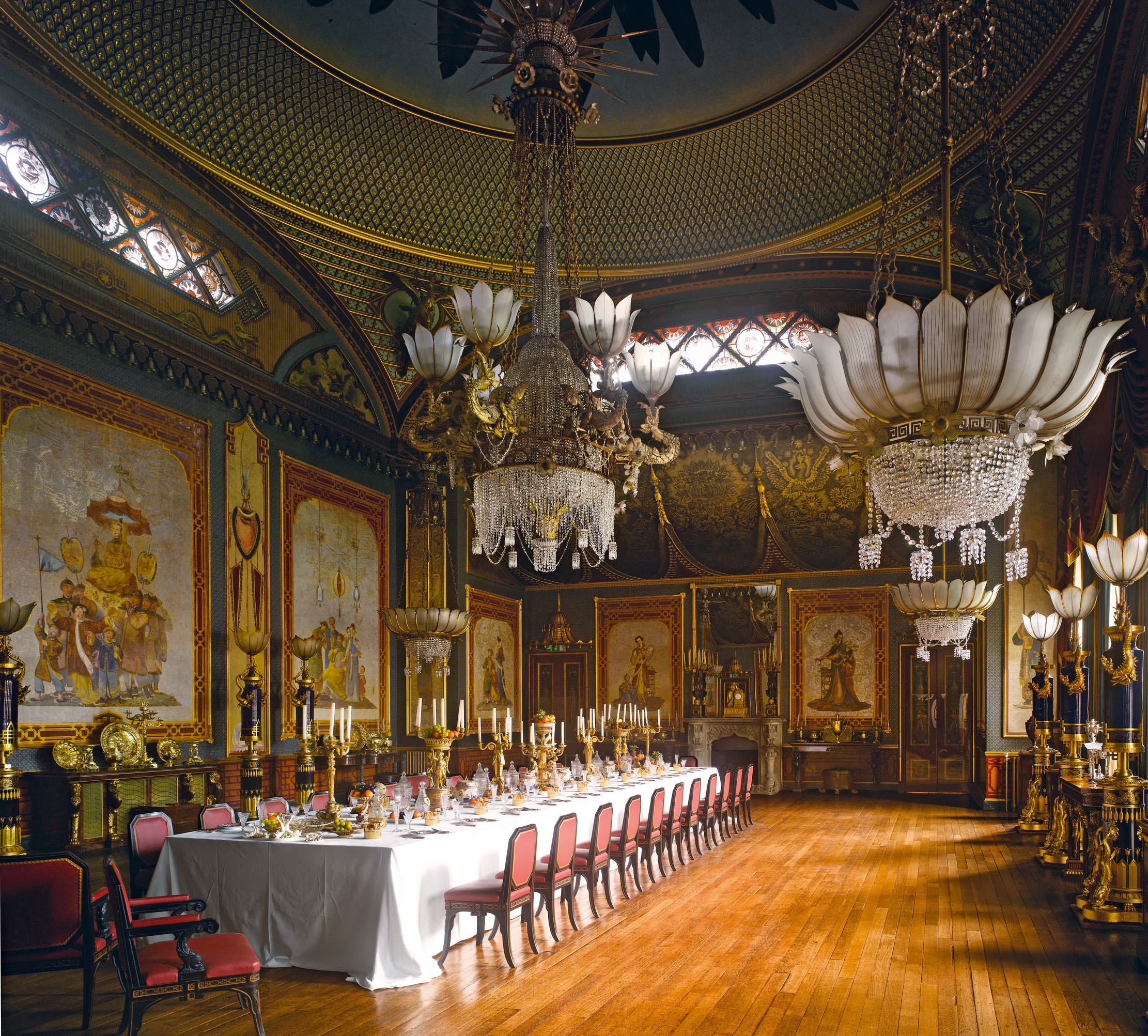
On October 5, 1826, Hermann, Prince of Pückler-Muskau, wrote from London to announce his safe arrival in England. The letter was one in a whole series written to his former wife over a period of three years that described a tour of England, Ireland and France. These were soon published anonymously as The Letters of a Dead Man (1830– 31) and enjoyed considerable success.
The Prince, whose home lay in modern-day Saxony, had amicably divorced and was in search of a rich English bride whose fortune might mend his own. His letters reflect the cool detachment necessary to contemplate such a scheme, although he never carried it into effect. The result is an essentially admiring, but penetrating — and occasionally unsparing — portrait of English society and domestic life.
He quickly perceived that the driving force behind the social activities he observed, was ‘not nobility, not wealth, but an entirely new power: Fashion’ — what he termed ton — ‘a goddess who in England alone, reigns… with despotic and inexorable sway — though always represented to mortal eyes by a few clever usurpers of either sex’.
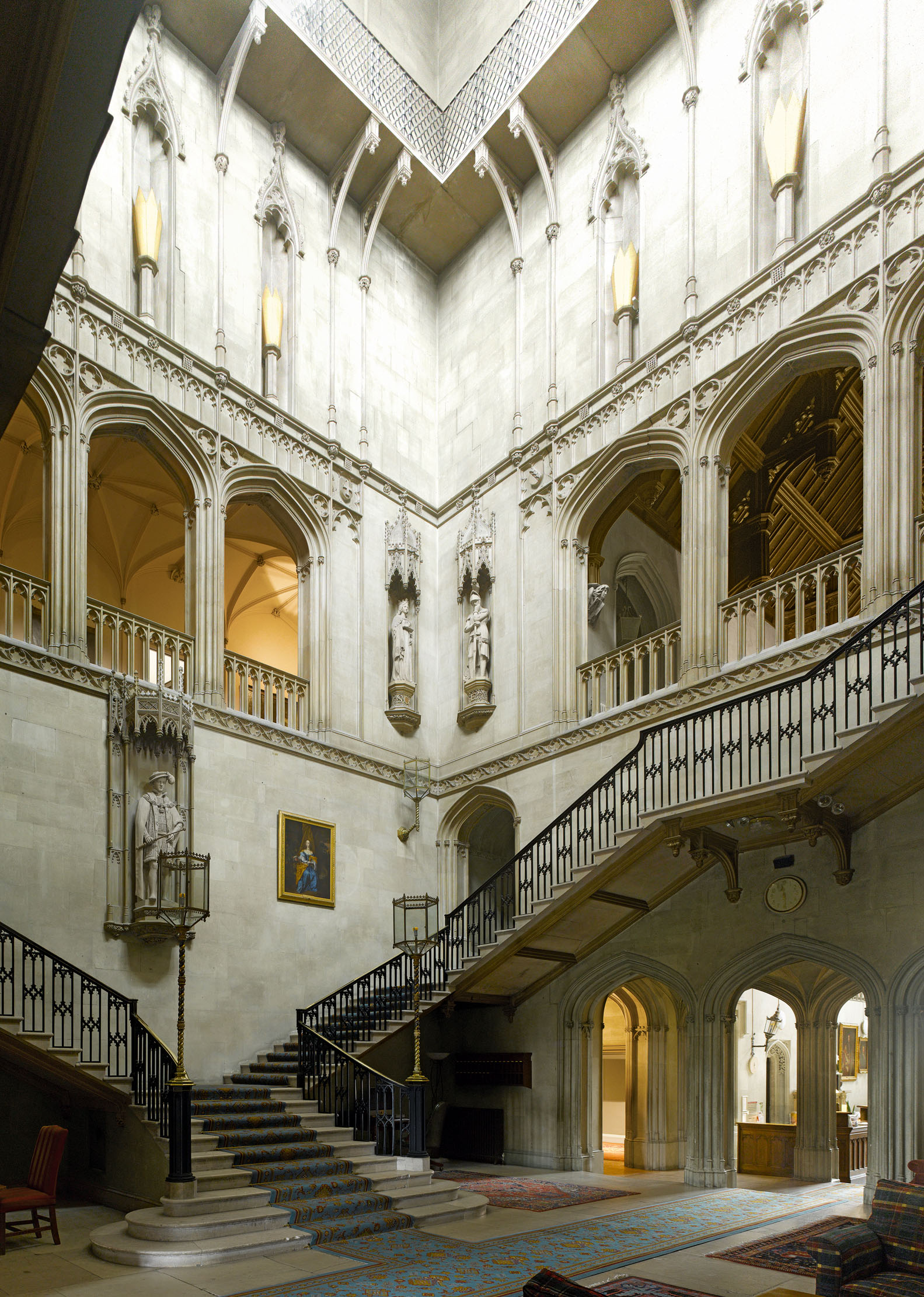
One of those ‘clever usurpers’ was George IV, whose constitutional rule during the madness of his father, George III, from 1811–20, has bequeathed us the term ‘Regency’ to describe the Arts between about 1790 and 1830. He made fashionable, for example, the idea of serving dinner, the main meal of the day, in the evening, rather than at about 3pm. At a stroke, the Georgian dining room became a nighttime interior (Fig 1). He was also a keen advocate of the new household technologies that were transforming domestic life in this period, such as central heating, compact kitchen stoves and gas lighting.
The kingdom that Prince Pückler-Muskau visited was brimming with self-confidence. Having emerged victorious from the Napoleonic wars, Britain knew itself to be the most powerful nation in the world. It was also the richest. At home that money was invested in land, the ownership of which both guaranteed political power — it was not until the Great Reform Act of 1832 that the emphasis of Parliamentary representation swung from the country to the city — and offered enrichment.
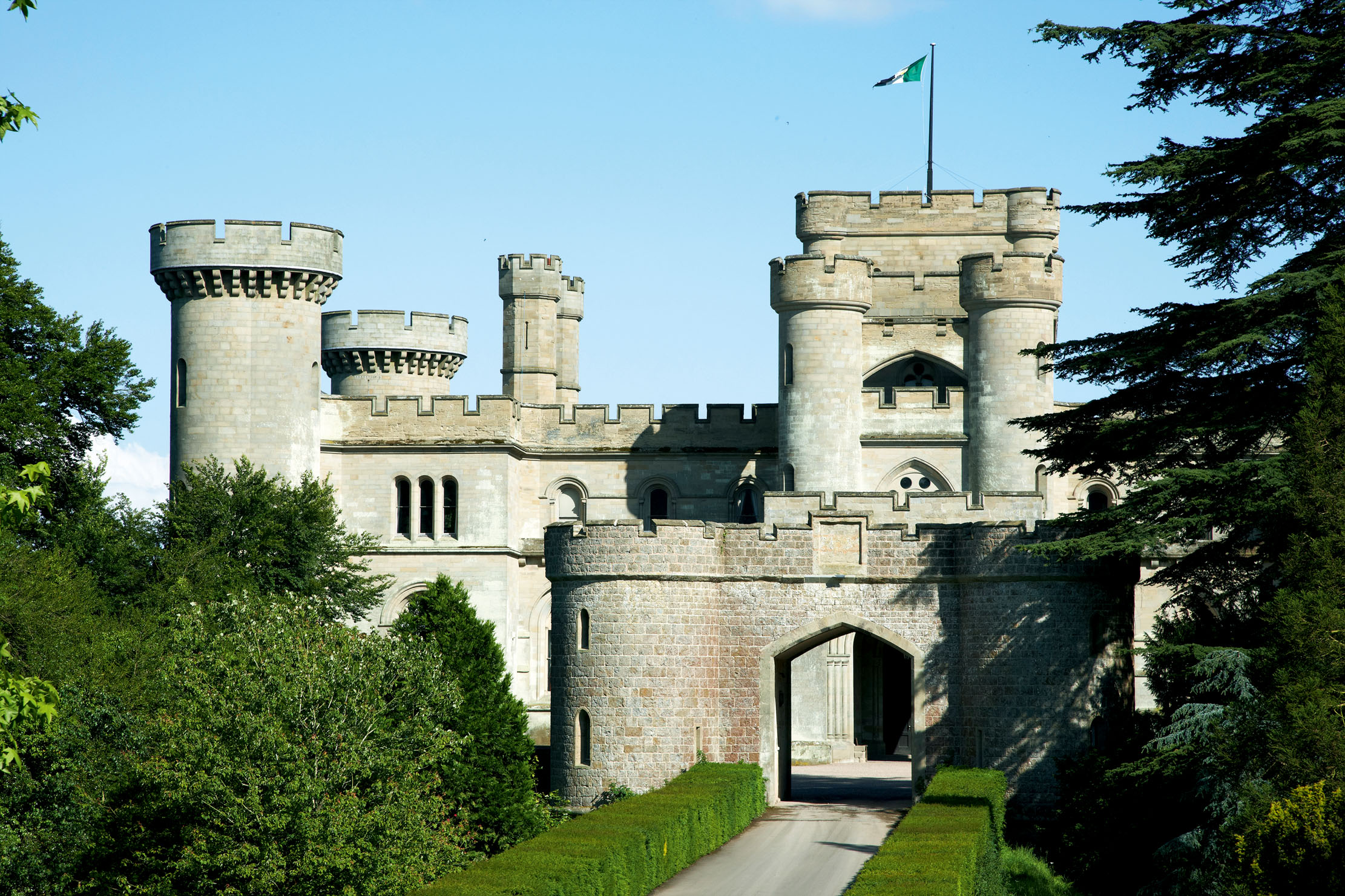
‘The great wealth of the landholders of England must always strike people from the Continent,’ Prince Pückler-Muskau observed. ‘Almost the whole soil is the property of the aristocracy, who generally let it only on lease; so that when a great man calls a village his… every house is his absolute property... You may conceive what enormous and ever increasing revenues this must bring them, in a country where trade and population are continually on the increase.’
He was not exaggerating: the demands of war had driven forward massive industrial and agricultural development. Across the kingdom, great estates were made geographically coherent, systems of lease were modernised and open fields were enclosed. A new network of canals facilitated the movement of goods. It all astonished the Prince: ‘These fertile and well-cultivated fields; these thousands of comfortable and pretty farmhouses and cottages scattered over every part of the country; this incessant stream of elegant carriages, well-mounted horsemen, and well-dressed foot-passengers, are peculiar to England.’
Exquisite houses, the beauty of Nature, and how to get the most from your life, straight to your inbox.
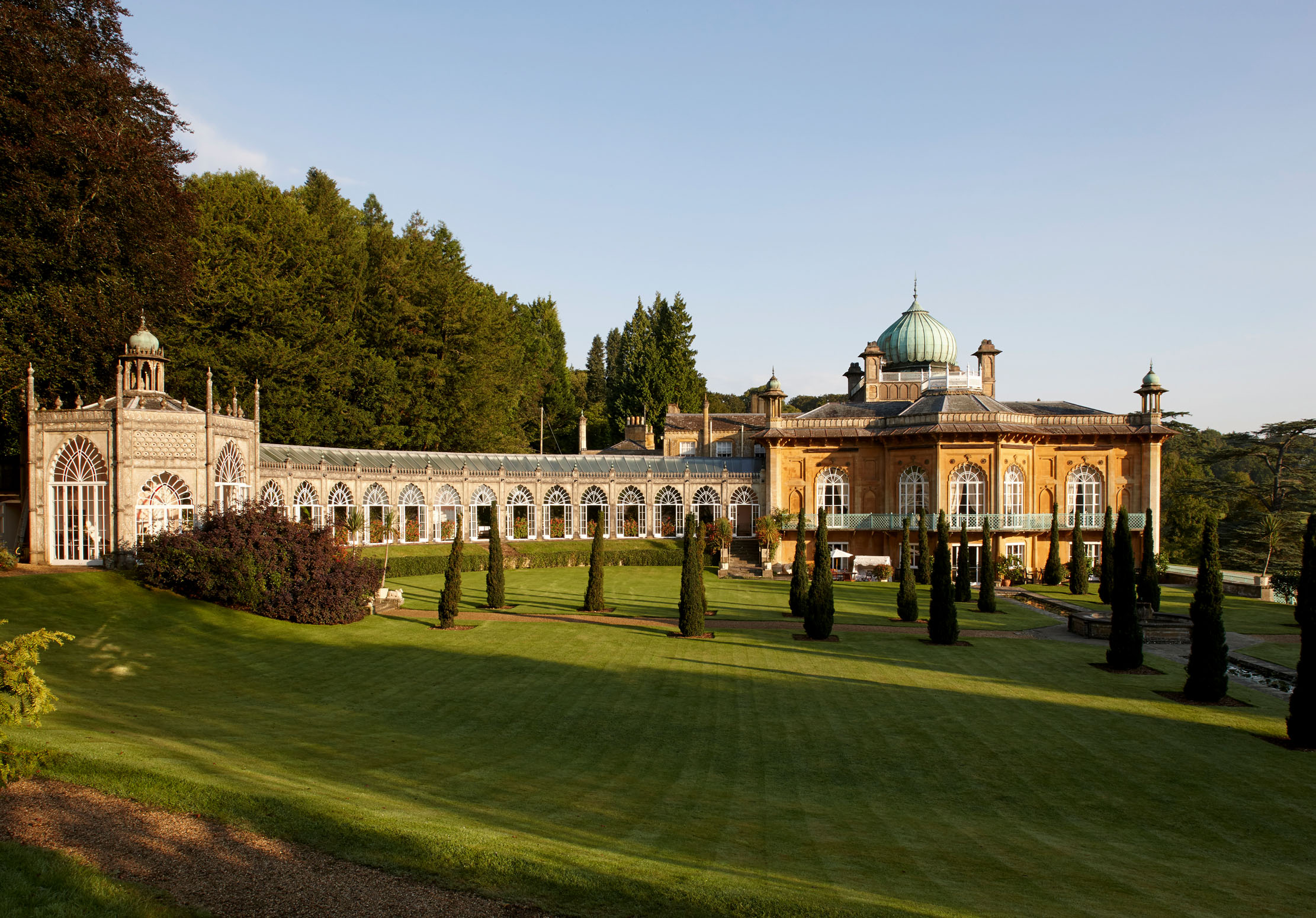
The economic management of land graduated seamlessly into the aesthetic. Wartime restrictions on Continental travel encouraged the British to rediscover their own landscape and view it through the prism of the Picturesque; an aesthetic that literally sought to construct views that would be pleasing in a picture. Under the direction of designers such as Humphry Repton, whole estates were improved and planted with trees and the country houses within them set off to advantage with carefully contrived approaches and vistas.
Those houses, moreover, were assuming new forms and purposes as the desire for fashionable novelty encouraged an unprecedented stylistic eclecticism in British architecture. In reaction to the upheavals of the French Revolution and fed by the Romantic movement (and the novels of Walter Scott), there developed a popular enthusiasm for British history, antiquarianism and the revival of Gothic architecture. For those with an interest in the Antique, such as the collector Thomas Hope, the further exploration of Greece and Egypt opened up new perspectives on the Classical world. Finally, global travel presented the buildings of other cultures, notably India and China, as a completely fresh source of artistic inspiration.
To the wealthy of Romantic temper and Picturesque sensibility, this stylistic variety allowed for the creation of houses in any number of outward guises — abbeys, castles (medieval, Roman or Scottish baronial), Mughal palaces (Fig 4) and even cottages. These might be realised on a modest scale as villas or pavilions, but they could also assume gigantic proportions, as in the case of James Wyatt’s celebrated abbeys at Fonthill, Wiltshire, and Ashridge, Hertfordshire (where the domestic offices historically overspilled into the neighbouring county of Buckinghamshire).
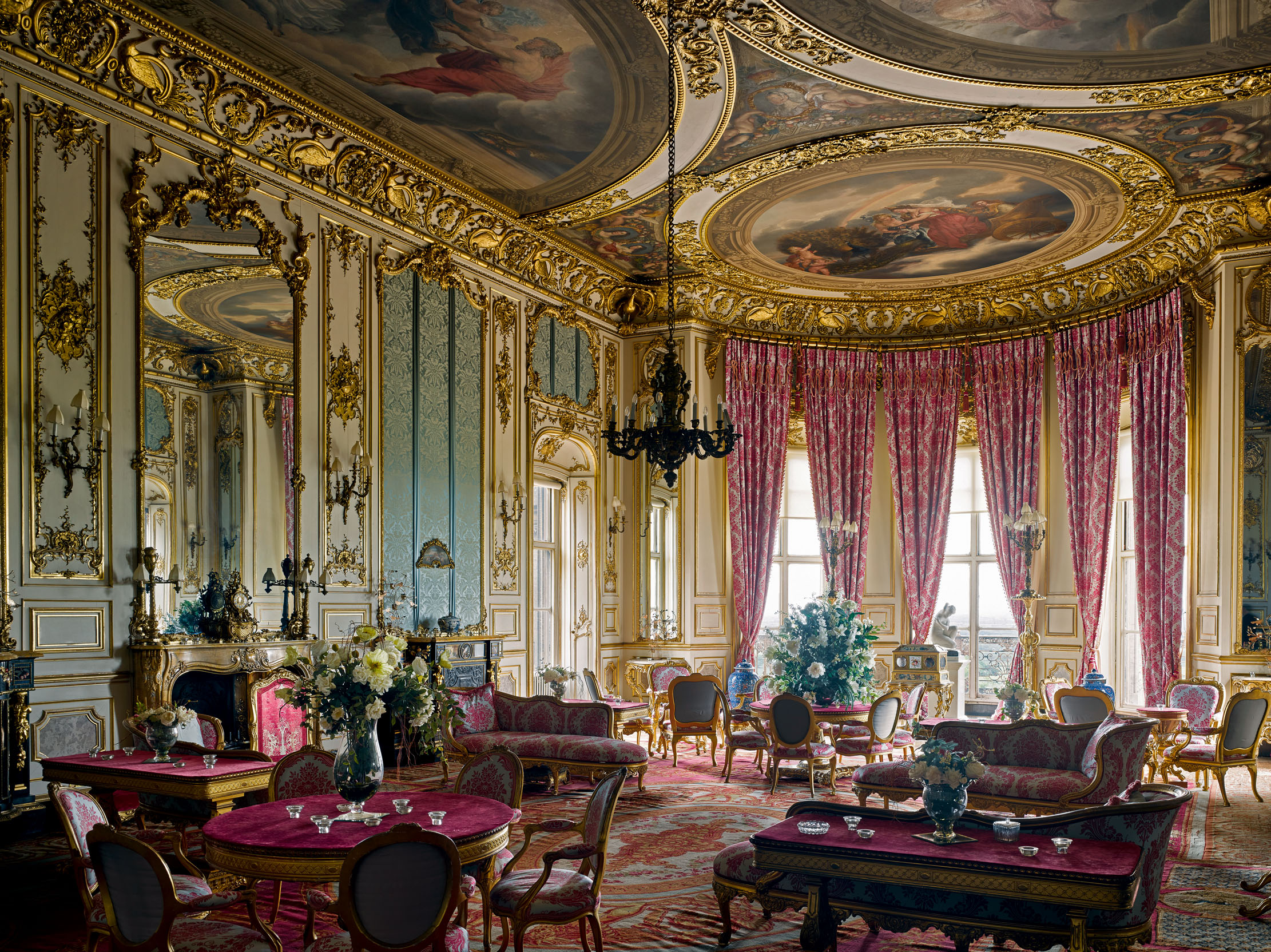
These idioms sometimes extended into the house interior (Fig 2), but remarkable stylistic disjunctions were acceptable. The Regency patron wanted comfort and luxury and, more often than not, they found inspiration in French example, both ancient and modern (Fig 5). There was more than a hint of vaingloriousness in this point of reference for a nation that had escaped revolution and defeated Napoleon. Consequently, interiors dripped as heavily with French references, as the language of the Regency beau.
At this time, country seats assumed a wholly new social function: the accommodation of house parties. The fashionable world spent the spring and early summer in London and then dispersed into the countryside. Steadily improving road systems made possible short social gatherings of friends or political associates. It’s no coincidence that, in this age of vehicular travel, there begin to appear open porches or porte-cochères that allowed visitors to ride up to the front door in a carriage and step into the house under cover (Fig 3).
Arranged around the entrance hall were three principal interiors, a drawing room, dining room and library (Fig 7). These were communal rooms for house guests and placed on the ground floor so that they might open through French windows directly into the garden and park. It also became popular in this period to attach conservatories to the house and incorporate them within the suite of ground-floor rooms. Upstairs were multiple bedrooms for the accommodation of guests.
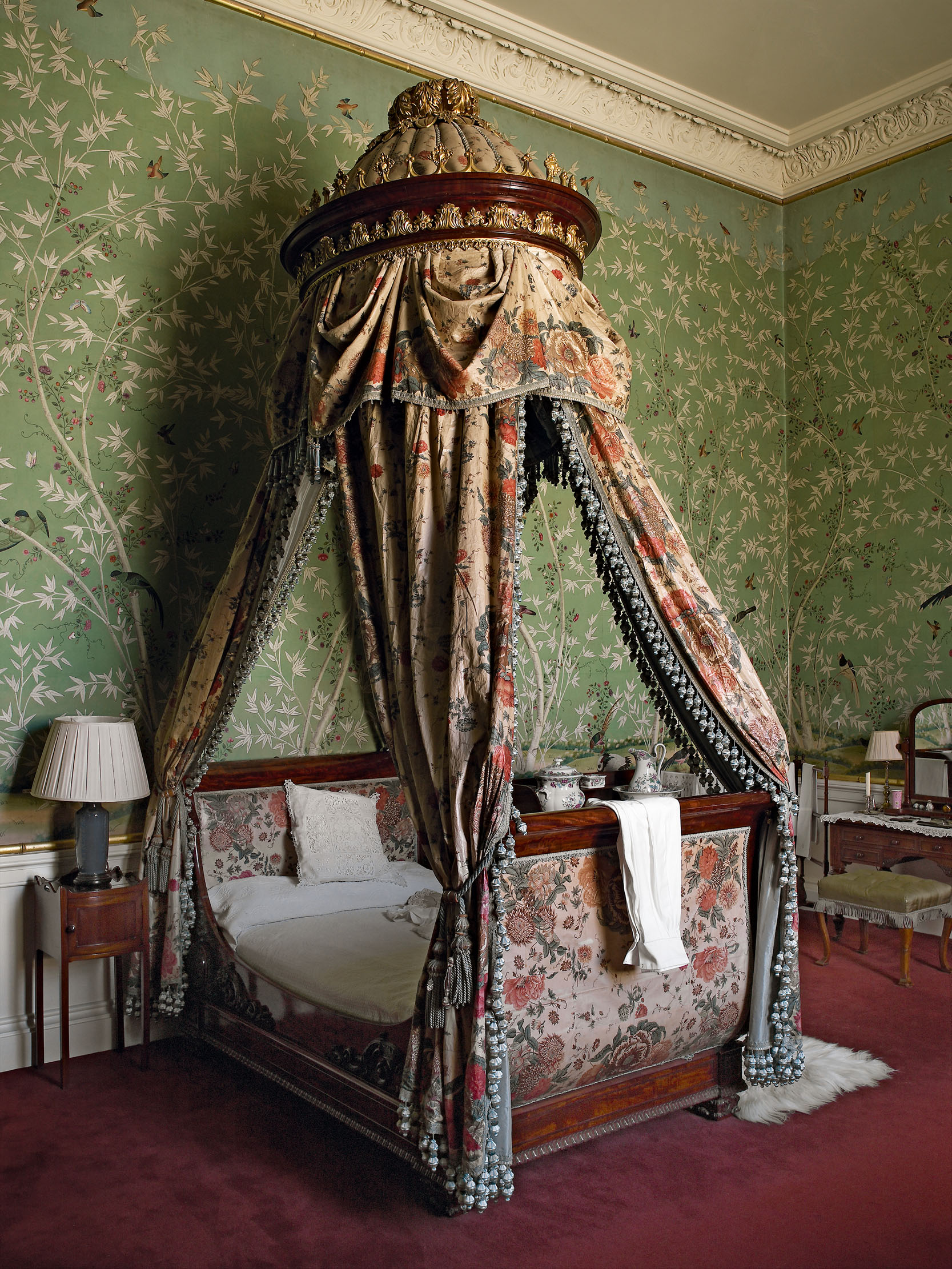
Architects such as Sir John Soane made ingenious internal use of natural light, incorporating large and flawless mirrors (Fig 8) and top-lighting using skylights. There was a particular fashion for amber in both marble finishes and stained glass in this period. John Nash, the favourite architect of the Prince Regent, experimented in planning with corridors to separate guests and servants.
Prince Pückler-Muskau describes the house party as ‘without any question, the most agreeable side of English life’ and some elements of it have survived the test of time. On such occasions, he explains, ‘strangers have generally only one room allotted to them, usually a spacious apartment on the first floor. Englishmen seldom go into this room except to sleep, and to dress twice a-day, which, even without company and in the most strictly domestic circle, is always de rigueur; for all meals are commonly taken in company’.
He goes on to give an account of a typical day. ‘Ten or eleven is the hour for breakfast, at which you may appear in negligée… The ladies do the honours of the table very agreeably. If you come down later, when the breakfast is removed, a servant brings you what you want. In many houses he is on the watch till one o’clock, or even later… Half-a-dozen newspapers must lie on the table for everyone to read who likes... The men now either go out hunting or shooting, or on business; the host does the same, without troubling himself in the least degree about his guests… and about half an hour before dinner the company meet again in the drawing-room in elegant toilette.’

These dinners were formal affairs. ‘The gentlemen lead the ladies into the dining-room, not as in France, by the hand, but by the arm… [and] there is a most anxious regard to rank. When you enter, you find the whole of the first course on the table, as in France. After the soup is removed, and the covers [of the dishes] are taken off, every man helps himself… and offers some of it to his neighbour.’
This long-standing system of serving food from dishes laid on the table was passing out of fashion in the 1820s under the influence of the Prince Regent, who introduced what was termed service à la russe, in which dishes were carried around the table by servants. Indeed, Prince Pückler-Muskau goes on to note that this new type of service was being adopted by ‘the most elegant travelled gentlemen’.
There were very particular protocols governing drinking. ‘It is not usual to take wine without drinking to another person,’ wrote Prince Pückler-Muskau. ‘When you raise your glass, you look fixedly at the one with whom you are drinking, bow your head, and then drink with great gravity… a messenger is often sent from one end of the table to the other to announce to B that A wishes to take wine with him… If the company is small, and a man has drunk with everybody, but happens to wish for more wine, he must wait for the dessert.’
That might take some time to arrive because: ‘At the conclusion of the second course comes a sort of intermediate dessert of cheese, butter, salad, raw celery, and the like; after which ale, sometimes thirty or forty years old… is handed about. The tablecloth is then removed: under it, at the best tables, is a finer, upon which the dessert is set. At inferior ones, it is placed on the bare polished table. It consists of all sorts of hothouse fruits... Clean glasses are set before every guest, and, with the dessert plates and knives and forks, small fringed napkins are laid. Three decanters are usually placed before the master of the house, generally containing claret, port, and sherry, or madeira. The host pushes these in stands, or in a little silver wagon on wheels, to his neighbour on the left. Every man pours out his own wine, and if a lady sits next him, also helps her; and so on till the circuit is made, when the same process begins again.’
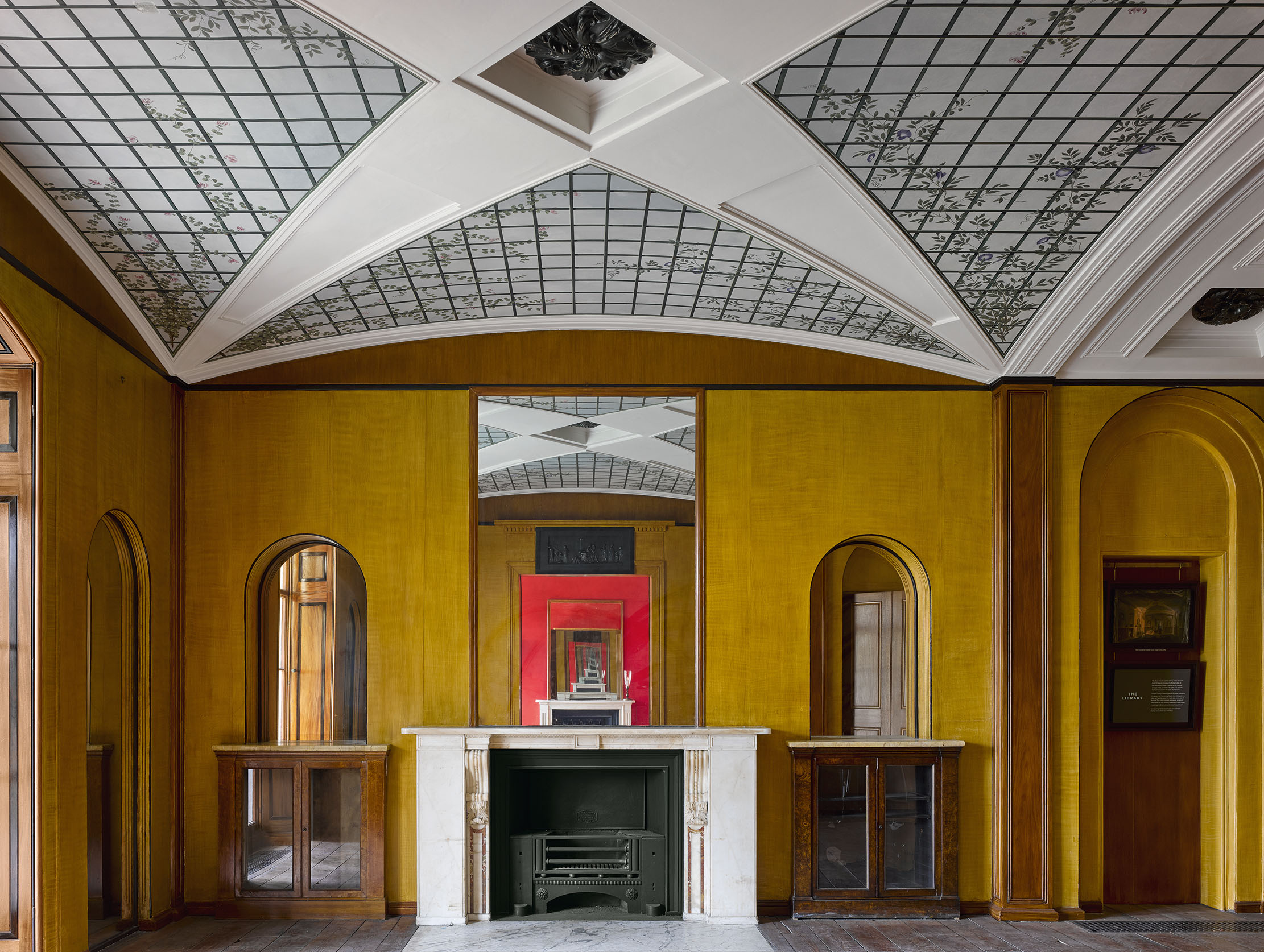
With the arrival of the dessert, he goes on to explain, the servants — who need to be up early — retire and then, after a quarter of an hour, the women get up from the table. ‘The men rise at the same time, one opens the door for them, and as soon as they are gone, draw closer together.’ This was an opportunity for heavy drinking, of which the Prince disapproved and which he claimed was passing out of fashion.
He continued: ‘When the men have drunk as much as they wish, they go in search of tea, coffee, and the ladies, and remain for some hours with them, though without mixing much. Today, for instance, I observed… our host lay on the sofa, dosing a little; five ladies and gentlemen were very attentively reading… another had been playing for a quarter of an hour with a long-suffering dog; two old Members of Parliament were disputing vehemently about the Corn Bill; and the rest of the company were in a dimly lighted room adjoining, where a pretty girl was playing on the pianoforte.’
This kind of lounging around encouraged the introduction of new kinds of comfortable seating arranged in nests, rather than lining the walls. Elsewhere, the Prince extols the virtues of ‘English chairs… adapted to every degree of fatigue, indisposition, or constitutional peculiarity’ and their arrangement with ingenious lamps and lecterns. He also, strikingly, comments on the seating postures adopted by the fashionable ‘sometimes of lying at full length on the carpet at the feet of ladies; of crossing one leg over the other in such a manner as to hold the foot in the hand’.
A cold collation of meat and fruits was left out and ‘shortly after midnight all retire. A number of small candlesticks stand ready on a side-table; every man takes his own, and lights himself up to bed… I found a most excellent chintz bed with a canopy (Fig 6). It was so enormously large that I lay like an icicle in it, for the distant fire was too remote to give any sensible warmth’.
The Victorian country house was much indebted to the innovations of use and planning developed in the Regency, as we will discover in the next instalment of this series next month.

How the Glorious Revolution changed the nature of the English country house
John Goodall looks at the English home in the aftermath of the ‘Glorious Revolution’, in the latest in his series
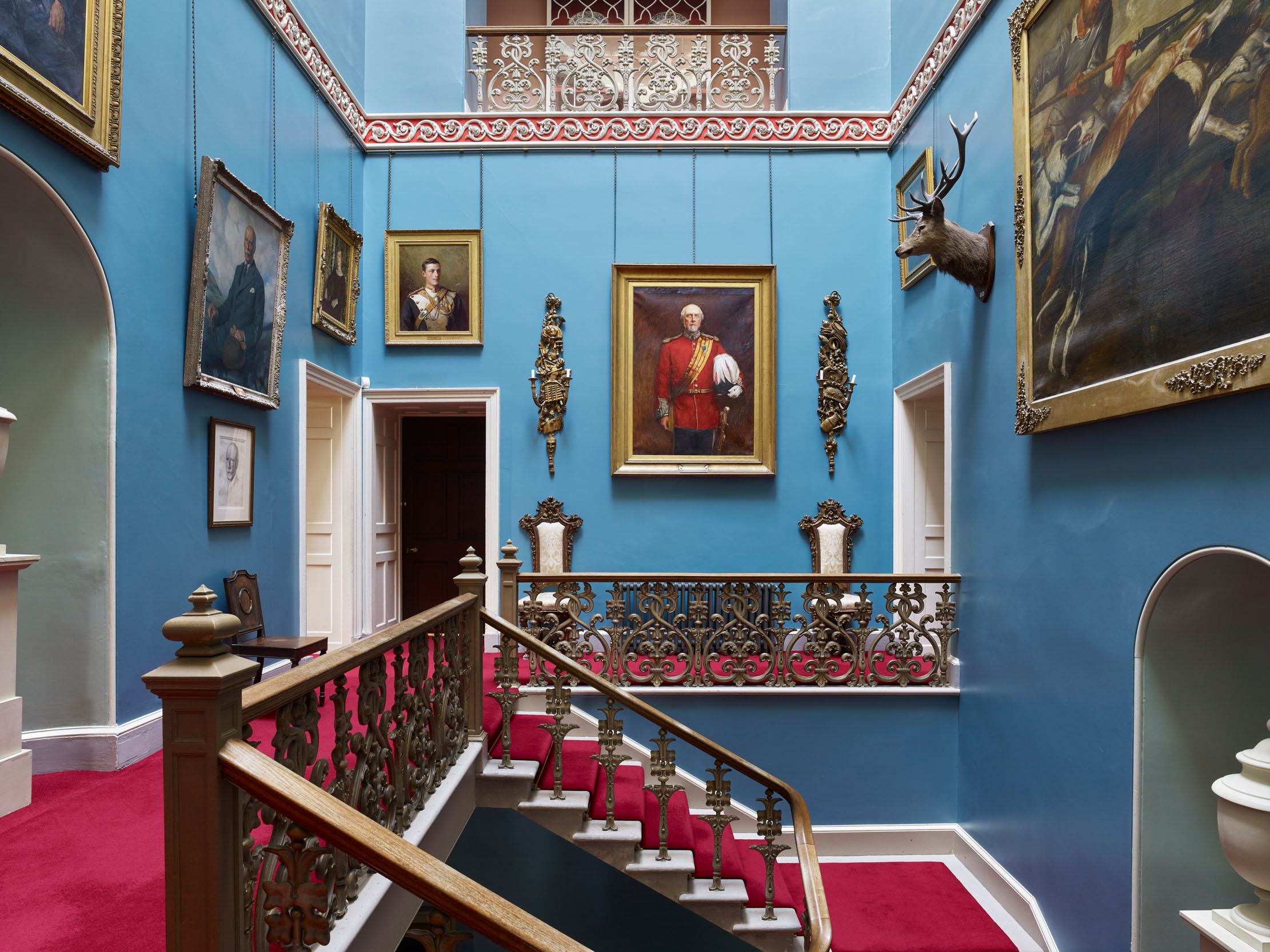
Ardgowan House: An 'almost miraculous' survival with a fascinating history
Ardgowan House in Renfrewshire, the seat of Sir Ludovic Shaw Stewart, is a remarkable building that's coming back to life,

Gilling Castle, the medieval stronghold and its journey through the Baroque to the 20th century
Gilling Castle, North Yorkshire — part of the Ampleforth Abbey Trust — is a medieval castle that underwent a Baroque

John spent his childhood in Kenya, Germany, India and Yorkshire before joining Country Life in 2007, via the University of Durham. Known for his irrepressible love of castles and the Frozen soundtrack, and a laugh that lights up the lives of those around him, John also moonlights as a walking encyclopedia and is the author of several books.